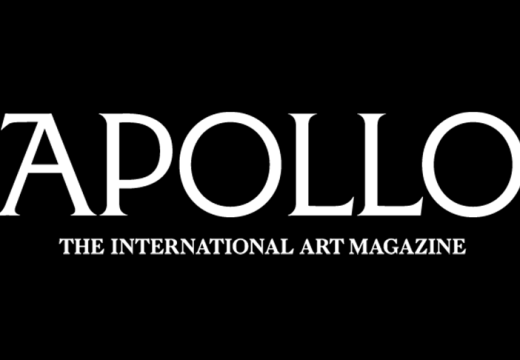In 1853, the archaeologist and photographer Auguste Salzmann travelled to Jerusalem to photograph the city’s religious monuments. The resulting photographs were published in 1856 as the album Jerusalem: A study and photographic Reproduction of the Monuments of the Holy City. Forty-two of them are currently on view at the Metropolitan Museum as part of the first solo exhibition of Salzmann’s photographs, appropriately titled ‘Faith and Photography: Auguste Salzmann in the Holy Land.’

Jerusalem, Valley of Jehoshaphat, Northwest Side, 1 (1854), Auguste Salzmann.
The album was intended primarily as an archaeological compendium of the Holy Land, and Salzmann took his documentary task seriously, scrupulously photographing each site from varying distances and perspectives. Nevertheless, like many of the first generation of photographers in the 1850s and 1860s, Salzmann came to photography by way of older visual media, and this debt is betrayed even by his most staid images. He deploys the same peculiar mix of traditional Romantic visual tropes (sublime landscapes, crumbling ancient ruins, nostalgic melancholy) and the novel verisimilitude of photography that so many Second Empire photographers use to great effect. Salzmann’s landscapes clearly (perhaps too clearly) invoke his mentor Gustave Le Gray and his aestheticisation of the architectural record echoes Charles Marville’s photographic catalogue of Haussmann era Paris.

Jerusalem, Valley of Jehoshaphat, Tomb of Saint James (1854), Auguste Salzmann.
Yet Salzmann’s Jerusalem photographs rarely achieve the sublime heights of either Le Gray or Marville, and only with assistance from the inherent natural beauty of the region (see, for example, his splendid Le Gray-inspired Chemin de Naplousse or his eerie series of the Valley of Jehoshaphat). Romanticism was fundamental to early photography because it grounded the medium in established artistic paradigms, thereby (the hope was) elevating it from a pseudo-scientific process to an actual art form. Unlike Le Gray or Marville, however, Salzmann’s Romanticism reads as an aestheticising veneer for the photography’s documentary powers rather than a means of transfiguring and elevating the medium into art. In other words, beautiful though it is, Salzmann’s endless catalogue of Jerusalem is not that original, and maybe a little bit boring.
This doesn’t mean that Salzmann’s photographs are uninteresting, however. Part of why they are aesthetically unsatisfying is because Salzmann’s primary concern in Jerusalem was not aesthetic. The struggle at the heart of this collection of photographs is not the quarrel about photography’s place between art and mechanical reproduction, but rather a spiritual struggle between the demands of faith and the constraints of reality, between what was believed and what could be scientifically verified.

Jerusalem, Damascus Gate, Interior (1854), Auguste Salzmann.
Some of this fight is waged outside the frame, as in Salzmann’s photograph of the so-called Arch of The Solomon Bridge, an otherwise nondescript image of a wall whose title inserts it into archaeological debates about whether the wall in question was actually part of the bridge or part of the foundations of a mosque built above it. When the fight to verify faith is waged within the frame, it is waged by means of photography’s brutal and incorruptible realism, not by any pretensions of artistry. Photography was to make Christian religious beliefs self-evident by presenting those convictions as inherent to and embodied in the real monuments that it captured so precisely. The more monotonous, the better; this boring truthfulness only bolstered the argument that the religious significance of these sites was self-evident and incontrovertible, rooted in their very physical substance.
Truthful though it may be, however, photography cannot travel back in time. Salzmann’s attempt to use the documentary capabilities of photography in 1853 to substantiate religious faith born thousands of years previously is, of course, doomed by his anachronistic misunderstanding of photography’s relationship to time (among other things).

Jerusalem, Church of the Holy Sepulchre, Details of the Capitals (1854), Auguste Salzmann.
Until recently, Salzmann’s belief in the power of photography to transcend space and time felt like a beautiful folly, one rooted in a charming – if naive – excitement about technological advancements and the human quest for knowledge, whether scientific or spiritual. In our ‘post-truth’ era, however, Salzmann’s photographs no longer appear as hopeful foibles. Instead, they loom as melancholy premonitions of the day when truth and personal conviction would become so entangled as to stifle our quest for understanding altogether.
‘Faith and Photography: Auguste Salzmann in the Holy Land’ is at the Metropolitan Museum of Art, New York, until 5 February 2017.
Unlimited access from just $16 every 3 months
Subscribe to get unlimited and exclusive access to the top art stories, interviews and exhibition reviews.














![Masterpiece [Re]discovery 2022. Photo: Ben Fisher Photography, courtesy of Masterpiece London](http://www.apollo-magazine.com/wp-content/uploads/2022/07/MPL2022_4263.jpg)
It’s time for the government of London to return to its rightful home